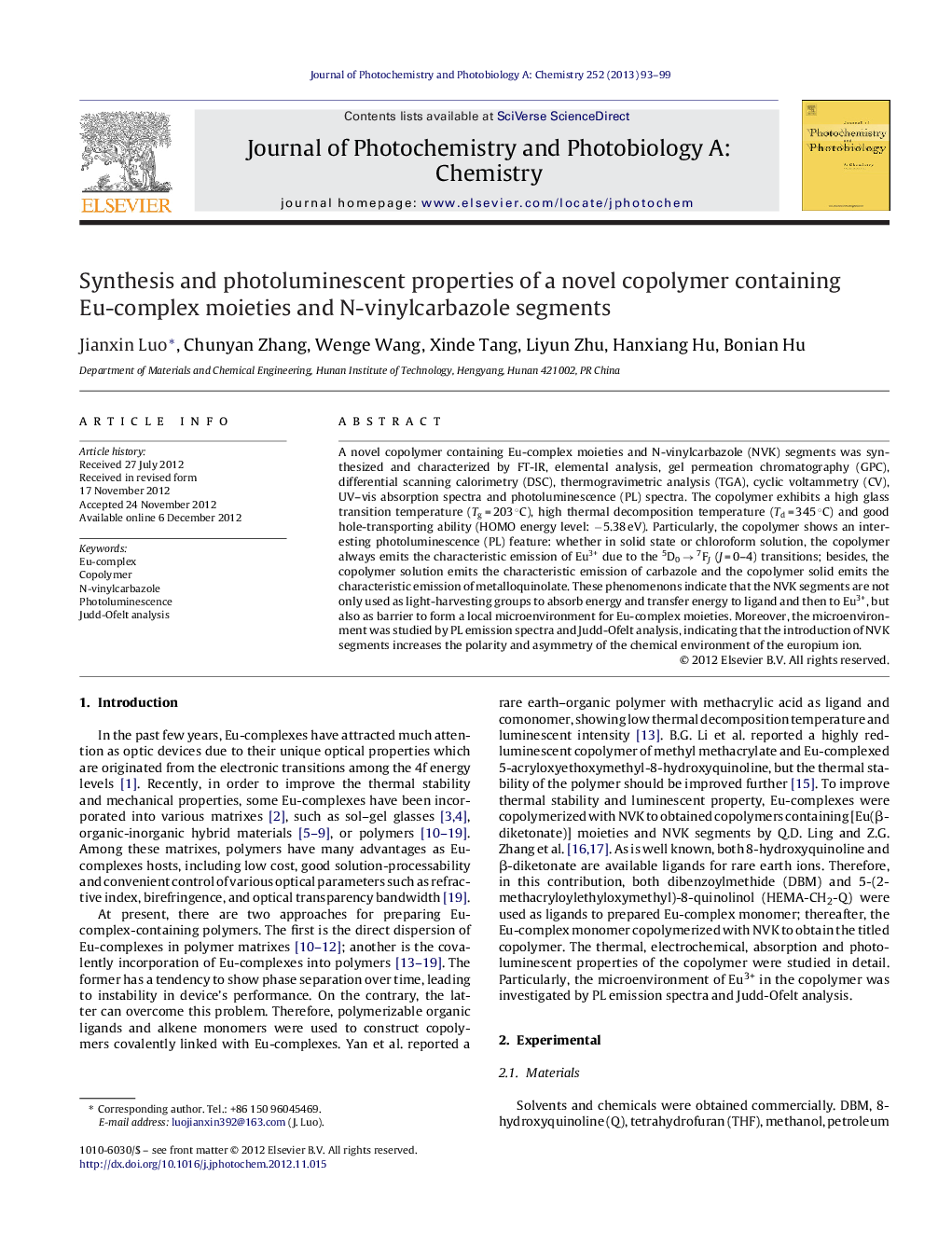| Article ID | Journal | Published Year | Pages | File Type |
|---|---|---|---|---|
| 26647 | Journal of Photochemistry and Photobiology A: Chemistry | 2013 | 7 Pages |
A novel copolymer containing Eu-complex moieties and N-vinylcarbazole (NVK) segments was synthesized and characterized by FT-IR, elemental analysis, gel permeation chromatography (GPC), differential scanning calorimetry (DSC), thermogravimetric analysis (TGA), cyclic voltammetry (CV), UV–vis absorption spectra and photoluminescence (PL) spectra. The copolymer exhibits a high glass transition temperature (Tg = 203 °C), high thermal decomposition temperature (Td = 345 °C) and good hole-transporting ability (HOMO energy level: −5.38 eV). Particularly, the copolymer shows an interesting photoluminescence (PL) feature: whether in solid state or chloroform solution, the copolymer always emits the characteristic emission of Eu3+ due to the 5D0 → 7FJ (J = 0–4) transitions; besides, the copolymer solution emits the characteristic emission of carbazole and the copolymer solid emits the characteristic emission of metalloquinolate. These phenomenons indicate that the NVK segments are not only used as light-harvesting groups to absorb energy and transfer energy to ligand and then to Eu3+, but also as barrier to form a local microenvironment for Eu-complex moieties. Moreover, the microenvironment was studied by PL emission spectra and Judd-Ofelt analysis, indicating that the introduction of NVK segments increases the polarity and asymmetry of the chemical environment of the europium ion.
Graphical abstractFigure optionsDownload full-size imageDownload as PowerPoint slideHighlights► Synthesis of a copolymer containing Eu-complex and N-vinylcarbazole segments. ► The copolymer exhibits good thermal stability and hole-transporting ability. ► The copolymer emits the characteristic emission of Eu3+. ► N-vinylcarbazole absorb energy and transfer energy to ligand and then to Eu3+. ► N-vinylcarbazole increases the polarity and asymmetry of Eu3+ site.
